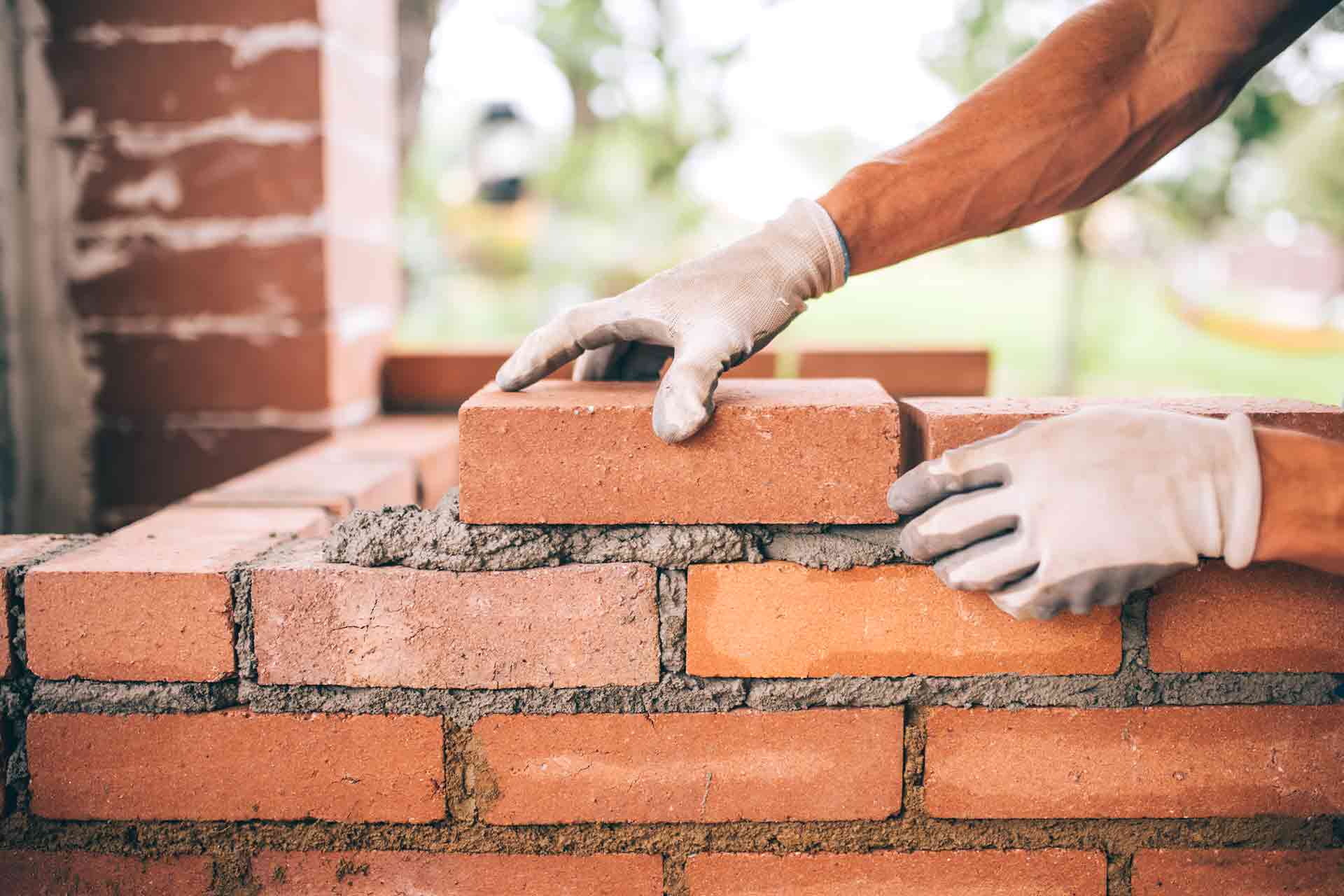The 7-Minute Rule for Bricklayer Auckland
Get This Report about Bricklayer Auckland
Table of ContentsBricklayer Auckland Things To Know Before You Get ThisThe 9-Second Trick For Bricklayer AucklandThe Buzz on Bricklayer AucklandIndicators on Bricklayer Auckland You Should Know
The distinction in between no and also classic stonework is in the laying of the brick. The brick is no longer pressed vertically, but tilted. ZERO has a special opening on the top side of the block. Because of this the mortar bed is lower. It will sink even deeper when the following training course of bricks is laid.In addition, we likewise paid attention to a great proportion between the length and also width of the brick so that it is perfect for working with a stretcher bond. Bricklayers are an important occupation in the building industry, responsible for laying blocks, pre-cut stone and also concrete blocks in mortar. Bricklayers construct, extend as well as fix residential and industrial buildings, and various other frameworks such as structures, walls, chimneys or decorative masonry.
Your time as a bricklaying pupil will normally be divided between your employer and training provider (such as an university), with at the very least 20% of your regular working hours spent on training. Your training could take place each week, on a monthly basis or in a separate block of time, as well as it can occur at your location of work, at your training company or online.
4 Simple Techniques For Bricklayer Auckland
When looking into construction, you invariably discover that any type of new or innovative suggestion has really been tried over and also over again, frequently extending back decades. Among these new-but-actually-old suggestions is the concept of a mechanical bricklayer, an equipment to automate the construction of masonry walls. It's very easy to see the charm of this suggestion - stonework construction seems virtually completely matched for mechanization.
It does not feel like it would certainly need physically complicated movements - each brick gets a layer of mortar applied, as well as is merely stocked place alongside the previous one. As well as because each traditional joint coincides dimension, positioning is virtually deterministic - each block coincides fixed range from the previous one.
These makers couldn't notice anything regarding their setting, or measure where a brick required to go - they merely squeezed out a layer of mortar and also mechanically positioned a brick at routine intervals (Bricklayer Auckland). It's unclear the number of of these devices ever made our website it past the attracting board, but a minimum of among these (John Knight's) was used to develop a brick wall that allegedly still stands today.
Throughout the years, stonework has decreased in importance as a building and construction innovation in the established world, as well as with it the interest in automating it. Unlike with concrete 3D printing, where there are loads of efforts to establish the technology, I can just discover a handful of existing initiatives to automate masonry. Bricklayer Auckland.
Not known Details About Bricklayer Auckland
It's capable of placing blocks in tight hallways or intricate corners, as well as Hadrian can create all the wall surfaces of a little structure with simply a couple of relocations of the automobile. Hadrian can presently establish around 200 obstructs a hr, yet they're intending to be able to do 1000 obstructs an hour or more (the blocks it establishes are various from the block masonry made use of in the US, yet in United States masons can set somewhere in the area of 400 blocks a day).
SAM has a collection of sensing units to make up for the movement of the system as well as guarantee it's positioning bricks level, as well as can function with blocks of all various dimensions (though it will not build CMU block walls). It gets mounted to a movable scaffolding that's elevated gradually as the wall surface is finished.
The promotional material on Construction Robotics' website suggests that it's no more important site their major emphasis - more emphasis is given to their various other item, MULE.Other than SAM and also Hadrian, there are a few various other mechanical bricklayers in various stages of growth. Craftsmac, a business out of India, simply lately revealed a robotic mason used for developing see this website CMU wall surfaces - it appears rather similar to SAM, a rolled chassis with a robot arm, conveyor, as well as mortar mixer placed to it.

The Bricklayer Auckland Ideas
A a little various classification of makers intended at enhancing masonry productivity is what I'll call "stonework aides". These are equipments created to help with physically lifting the block (they appear to be much more common with block than brick) and taking the stress off the mason, while still permitting the mason to manipulate it right into placement, Masonry aides date from at the very least 1994, when the army trying out MAMA, the Mechatronically Assisted Mason's Aid.
